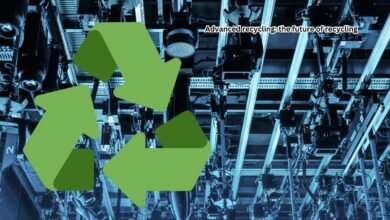How continuous learning bridges education to the workplace
Close the gap! Learn how continuous learning keeps your skills fresh & bridges the schooling-to-working world

Continuous learning is the ongoing process of acquiring new skills and knowledge throughout an individual’s career. Unlike traditional education, which often concludes after a certain period, continuous learning emphasizes the importance of lifelong education in adapting to the ever-changing job market. In today’s dynamic professional landscape, continuous learning is not merely an option but a necessity for staying relevant and competitive.
The significance of continuous learning cannot be overstated, particularly as industries evolve at an unprecedented pace. Professionals are required to stay updated with the latest trends, technologies, and methodologies to remain effective in their roles. For instance, advancements in technology demand that employees continually upgrade their technical skills to keep pace with innovations. Similarly, changes in industry standards and best practices necessitate ongoing education to ensure compliance and efficiency.
For employees, continuous learning offers numerous benefits, including enhanced job satisfaction and career advancement opportunities. By engaging in regular skill development, professionals can achieve a greater sense of accomplishment and fulfillment in their work. This ongoing education also opens doors to new career paths and promotions, as individuals become more qualified and adaptable to diverse roles within their field.
Employers, too, reap substantial rewards from fostering a culture of continuous learning. A workforce that is committed to ongoing education is generally more productive and innovative. Continuous learning helps employees to develop critical thinking and problem-solving skills, which are essential for driving organizational success. Moreover, companies that invest in their employees’ professional growth often experience higher retention rates, as employees feel valued and motivated to contribute to the organization’s objectives.
Continuous learning serves as a bridge between education and the workplace, ensuring that professionals remain competent and confident in an ever-evolving job market. By prioritizing lifelong learning, both employees and employers can achieve sustained growth and success in their respective fields.
Bridging the Gap: Education to Workplace
In today’s rapidly evolving job market, the transition from formal education to the workplace can often be challenging. Traditional education systems, while foundational, frequently fall short in equipping students with the practical skills needed to navigate real-world professional environments. This is where continuous learning becomes invaluable, serving as a critical bridge between academic knowledge and workplace competencies.
One significant limitation of traditional education is its focus on theoretical understanding rather than practical application. Many graduates enter the workforce with a strong academic background but lack essential skills that are crucial for career success. Continuous learning addresses these gaps by providing opportunities for individuals to acquire and hone the following:
- Soft Skills: Communication, teamwork, problem-solving, and leadership are often underemphasized in formal education but are vital in the workplace.
- Technical Skills: Specific technical competencies, such as data analysis, coding, and digital literacy, that are increasingly demanded across various industries.
- Industry-Specific Knowledge: Understanding industry trends, regulations, and best practices that are not typically covered in general education curriculums.
Continuous learning is facilitated through various platforms and experiences that complement traditional education. Internships, for instance, offer hands-on experience and insights into industry operations, bridging the gap between academic concepts and real-world application. Workshops and seminars provide focused training on specific skills, allowing individuals to stay updated with the latest industry developments.
Online courses have also become a popular medium for continuous learning, offering flexibility and access to a vast array of subjects. These courses enable learners to upskill and reskill at their own pace, catering to the dynamic requirements of the modern workplace. Additionally, on-the-job training programs ensure that employees continually develop new skills and adapt to changing job roles and technologies.
By integrating continuous learning into their career development, individuals can effectively bridge the gap between education and the workplace, ensuring they remain competitive and capable of meeting the demands of their professional environments.
Methods and Tools for Continuous Learning
Continuous learning is an essential practice for professionals looking to bridge the gap between education and the workplace. A myriad of methods and tools are available to facilitate this ongoing educational journey, each offering unique benefits tailored to diverse learning preferences and career aspirations.
Online platforms like Coursera, Udemy, and LinkedIn Learning have revolutionized access to knowledge. These platforms provide a wide range of courses, from technical skills to soft skills, making learning accessible anytime and anywhere.
Mentorship programs are another valuable avenue for continuous learning. These programs pair less experienced individuals with seasoned professionals, fostering a transfer of knowledge and industry insights that are often not available through traditional learning methods.
Attending professional seminars and conferences can also significantly enhance one’s expertise. These events offer opportunities for networking, exposure to cutting-edge research, and firsthand learning from industry leaders.
Self-study is another crucial method for continuous learning. Engaging with books, articles, and research papers allows individuals to explore topics in-depth at their own pace. This method cultivates critical thinking and independent research skills.
Here are some of the advantages and disadvantages of each method:
- Online Platforms:
- Advantages: Flexibility, wide range of subjects, certification options
- Disadvantages: Requires self-discipline, limited hands-on practice
- Mentorship Programs:
- Advantages: Personalized guidance, real-world insights
- Disadvantages: Availability of mentors, potential for mismatched pairings
- Seminars and Conferences:
- Advantages: Networking opportunities, access to the latest research
- Disadvantages: Cost, time commitment
- Self-Study:
- Advantages: Flexibility, depth of learning
- Disadvantages: Lack of interaction, requires high motivation
Companies play a pivotal role in encouraging continuous learning. By providing access to these resources and fostering a culture that values education, organizations can ensure their workforce remains competitive and innovative. Supporting continuous learning can involve offering subsidized courses, facilitating mentorship programs, and promoting attendance at industry events.
Pros and Cons of Continuous Learning
Continuous learning has become an essential aspect of professional development in today’s rapidly evolving job market. However, like any other endeavor, it comes with its share of advantages and disadvantages.
| Pros | Cons |
|---|---|
| Staying Competitive in the Job Market | Time Commitment Required |
| Personal Growth | Cost of Courses and Programs |
| Increased Adaptability to Change | Risk of Burnout from Constant Learning |
On the positive side, continuous learning helps individuals stay competitive in the job market. By regularly updating their skills and knowledge, professionals can keep pace with industry trends and innovations, making them more valuable to employers. Personal growth is another significant benefit. Engaging in lifelong learning fosters intellectual curiosity, boosts self-esteem, and enhances cognitive abilities. Furthermore, continuous learning increases adaptability to change. As the workplace evolves, having a diverse skill set allows professionals to pivot and adjust to new roles or technologies more efficiently.
Despite these benefits, continuous learning also has its drawbacks. The time commitment required can be substantial, especially for those balancing work, family, and other responsibilities. Finding the time to dedicate to learning new skills or pursuing additional qualifications can be challenging. Additionally, the cost of courses and programs can be a barrier. High-quality education often comes with a price tag, which may not be feasible for everyone. Lastly, there’s the risk of burnout from constant learning. Continuously pushing oneself to acquire new knowledge without adequate breaks can lead to mental fatigue and decreased productivity.
To effectively manage these challenges, it’s crucial to set realistic goals and prioritize learning activities. Allocating specific time slots for education can help integrate it into daily routines without overwhelming other commitments. Exploring cost-effective learning options, such as free online courses or employer-sponsored training programs, can also alleviate financial pressures. Lastly, taking regular breaks and allowing time for rest is essential to prevent burnout and maintain a healthy balance between learning and other aspects of life.



